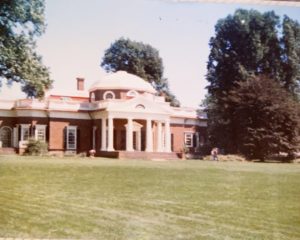The Booker T. Washington National Monument in Hardy, Virginia commemorates the birthplace of African American educator, author, orator, and adviser to multiple presidents of the United States between 1890 and 1915. Booker T. Washington was born into slavery on this plantation in 1856 on this site. After emancipation with the end of the Civil War Washington’s mother moved the family to West Virginia where Washington worked in salt furnaces and coal mines in West Virginia for several years to earn money. He made his way east to Hampton Institute, a school established in Virginia to educate freedmen and their descendants, where he also worked to pay for his studies. He later attended Wayland Seminary in Washington, D.C. In 1881, the Hampton Institute president Samuel C. Armstrong recommended Washington, then age 25, to become the first leader of Tuskegee Normal and Industrial Institute (later Tuskegee Institute, now Tuskegee University), the new normal school (teachers’ college) in Alabama. The new school opened on July 4, 1881. For 30 years Washington led the school in developing and implementing new and innovative curriculums becoming an important leader of the African American community in the process. The national monument provides interpretation of Washington’s life and achievements, as well as interpretation of 1850s slavery and farming through the use of buildings, gardens, crafts and animals.





